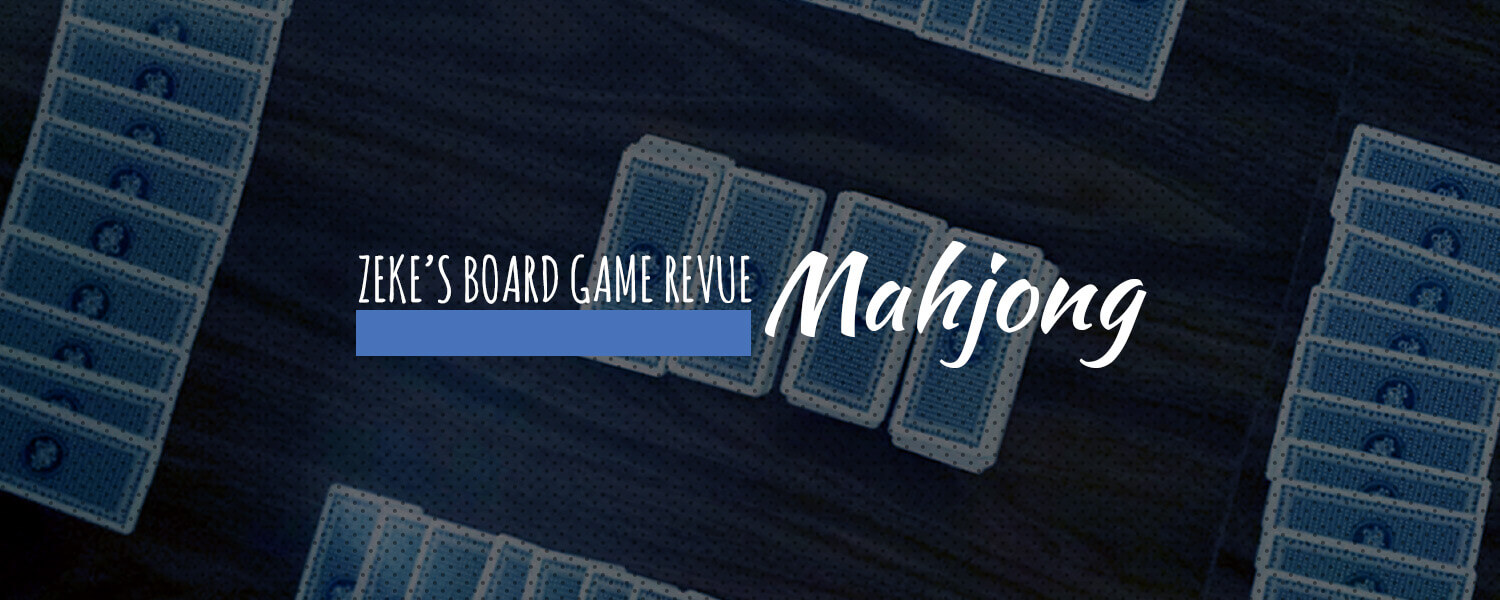Hey hey, Zeke is back again and I’ve brought another game with me to play! This week I present another classic game: mahjong. Featured in plenty of media, from manga to live action films (I’m thinking Kung Fu Mahjong), mahjong is a classic game loved by people from China, to Japan, to the United States. But with all those tiles, all the yelling (Ron! Tsumo!), how can you tell how to play? Well, I’m here to break it down for you in this week’s revue.
History & Game Type
Much like Go that we looked at last time, Mahjong can trace its origins to China. This game is a bit more recent, though. It only made its first appearance in the 18th or 19th century. Interestingly enough, even though mahjong is commonly thought of as being played with tiles, it actually started as a card game, and then became a tile based game later on. Mahjong was brought to Japan in 1924, where the game was simplified from the Chinese rules. It was later modified with new rules specific to Japanese play and has grown to become the most popular board game in Japan.
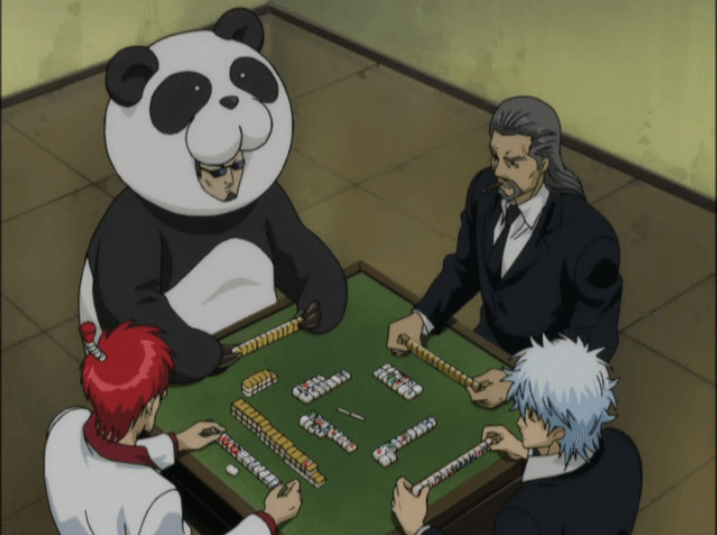
Unlike the games we’ve looked at before, this game uses random elements and has hidden elements. Any of you who have played Rummy before may recognize some elements found in mahjong. Like several meld based games, it is believed that they share a common ancestor, much like how chess and shogi share similar roots and have many gameplay similarities.
Equipment
The equipment for mahjong is relatively simplistic. A Japanese mahjong set is either 136 tiles or cards. No special board is required. The cards are split into three suits and two sets of “honor” tiles. Each card or tile has four copies in the game.
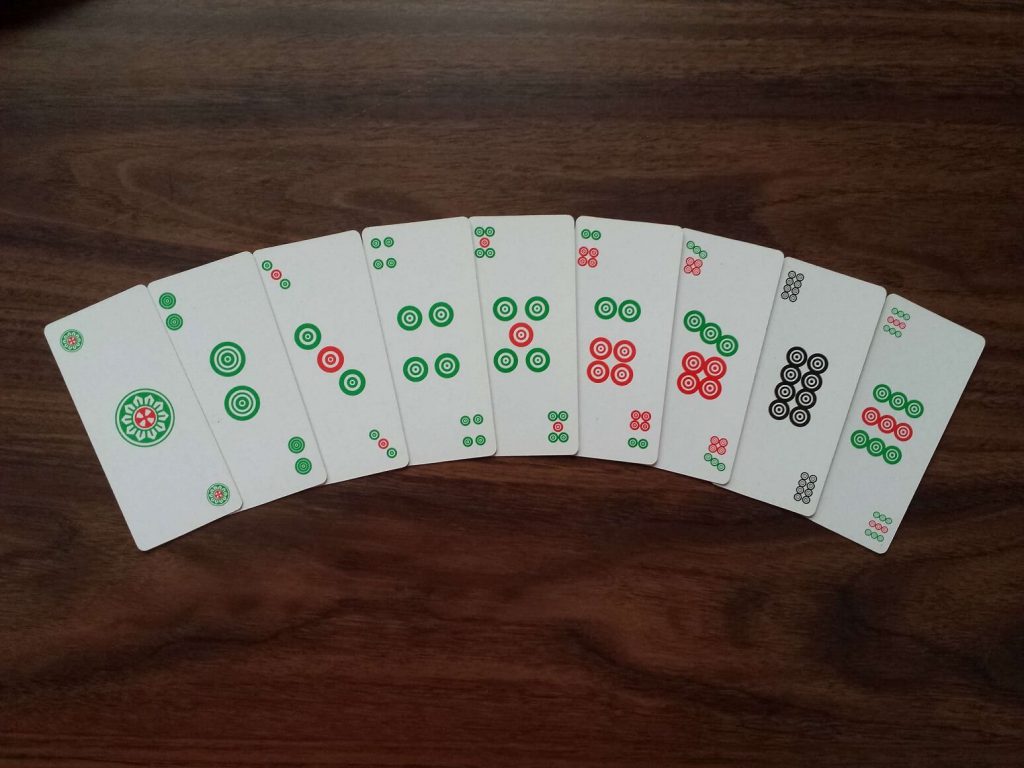
The first suit is as simple as dots, numbered one through nine.
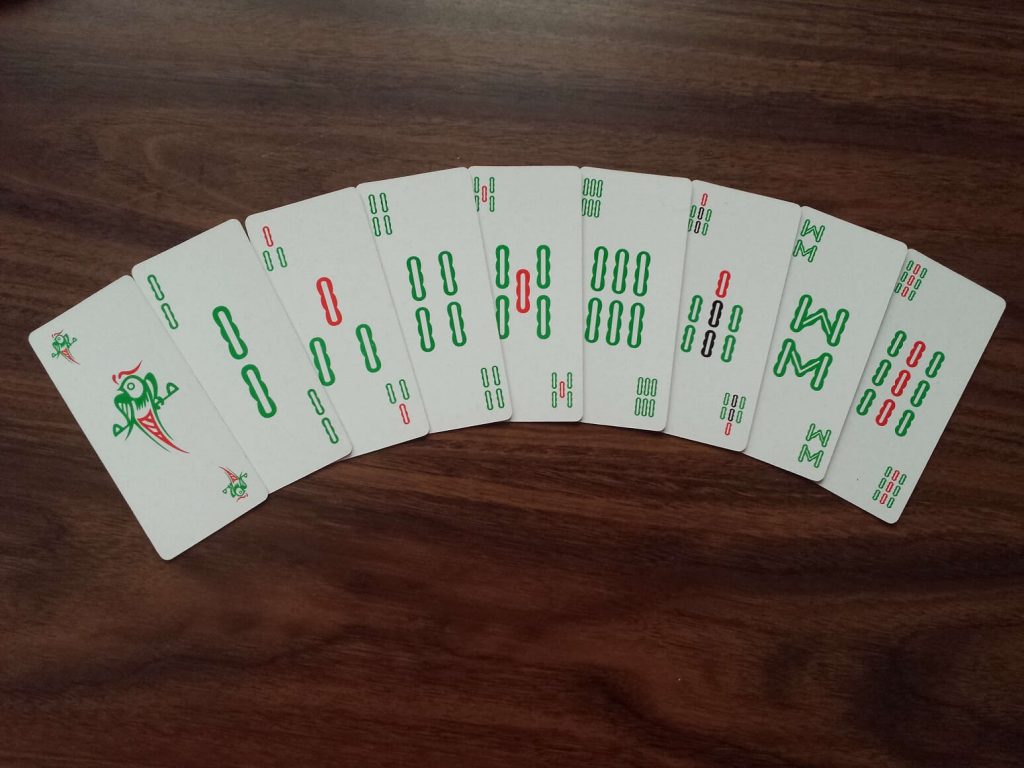
Bamboo is the second suit of mahjong. Much like the circle suit, the cards are simply numbered one through nine. Note the little bird for the one. Cute, eh?
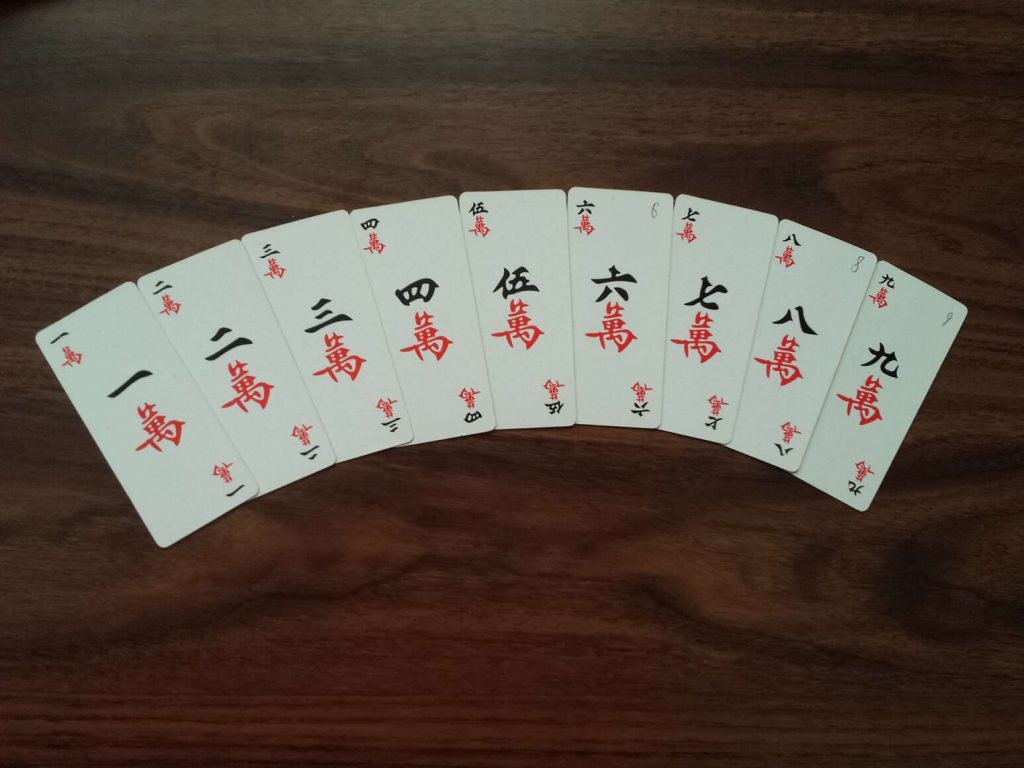
The third suit of mahjong is kanji. Interestingly, the cards are numbered ten thousand through ninety thousand. This is a holdover from the suits monetary origins. The circles are coins, the bamboo represents coins on strings, and the kanji are groups of coins on strings. Notice the little notes on a few of the cards. I had a bit of trouble remembering the characters…
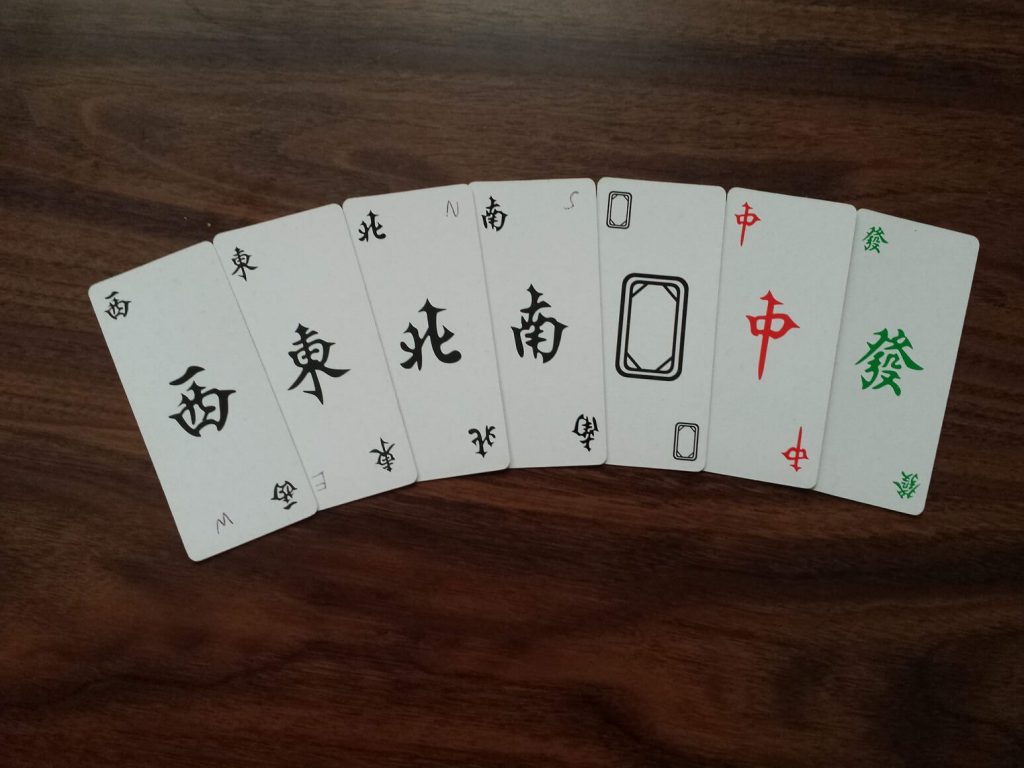
The final set of tiles or cards are the honor tiles: the four winds and the three dragons. Notice the notes on the directions again, I had some more trouble remembering…
Set up and Game play
A traditional mahjong game is played with four players. One player is randomly chosen as the “east wind.” The player to their left is the south wind, across is the west wind, and to the right is the north wind. These positions are important for both scoring and dealing.
The exact setup from here depends on whether tiles or cards are being used, but the idea is the same. All the tiles/cards are shuffled and then placed in two tile high stacks 17 tiles long by each player. The stacks are pushed forward to form the square in the center of the table you may be familiar with. Each player then takes four tiles at a time in order until they have 12 each. Then each player takes one more tile to create their 13 pieces opening hand. Seven tiles are then used to create a “dead wall” (pieces that will not be in the game) and the rest of the tiles make up the pieces drawn in the game.
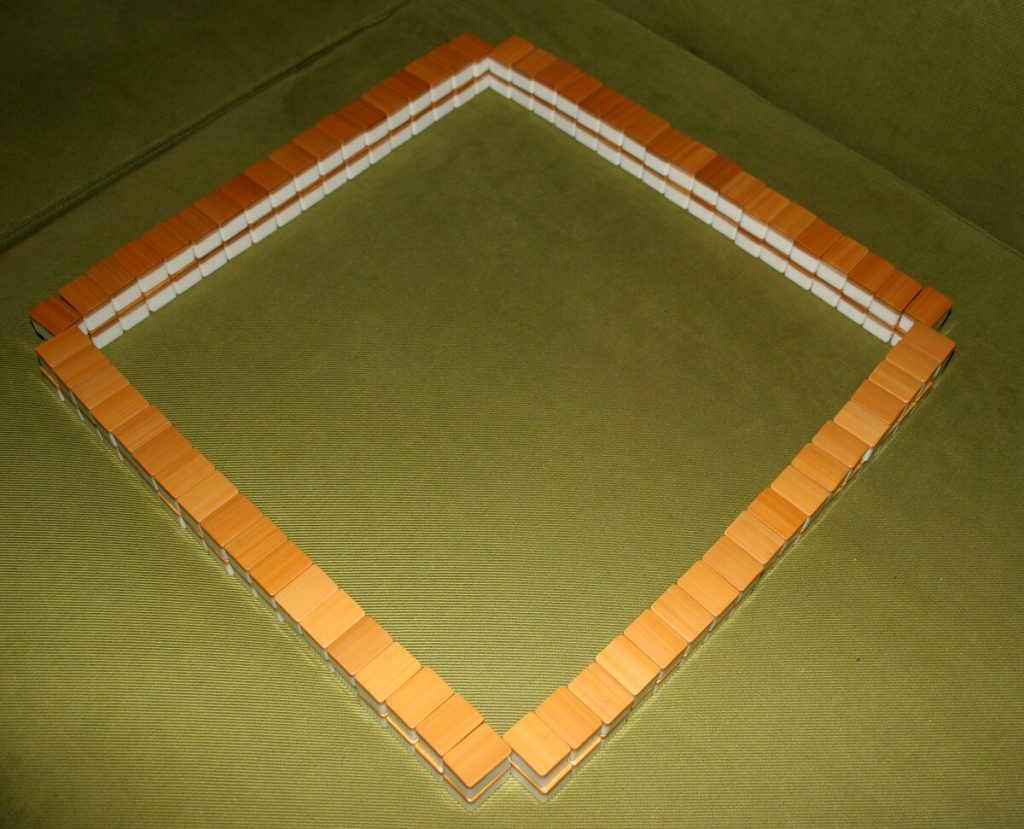
The east wind “deals” first, essentially meaning they go first. After the round, the winds shift to the next seat clockwise. A match of mahjong ends when any player drops below zero points. As the rounds progress, the “prevailing wind” changes every four rounds. During a wind’s round, that wind may be used to score more points.
The basic rules of mahjong are fairly simple. Winning a round, however… we’ll get to that. Each round, a player may either draw from the wall or take the last player’s discard, then the active player must discard and play proceeds to the left. There are ways to call pieces outside of one’s turn, however. If a piece would complete a set of three or four in your hand, you may call out “pon” or “kan” respectively and take the piece and place it in your hand. Pieces which complete a run of three can only be taken from the player immediately before and is called out as “chi.” Any sets or runs formed from discards are placed face up in front of you. I’ll speak more about runs and sets in a moment.
The goal of mahjong is to complete a 14 tile hand (13 from your start and 1 from discard or the deck) composed of, normally, four runs or sets and a pair. The first to complete a hand wins the round and scores points. Runs are three tiles/cards of the same suit in a row (bamboo one through three for example) and sets are collections of three or four of the same tile (an example would be three red dragons). These sets and runs are known as “melds” and form the basis of the game. There are several special hands that also count as winning hands and usually have some sort of point bonus attached to them.
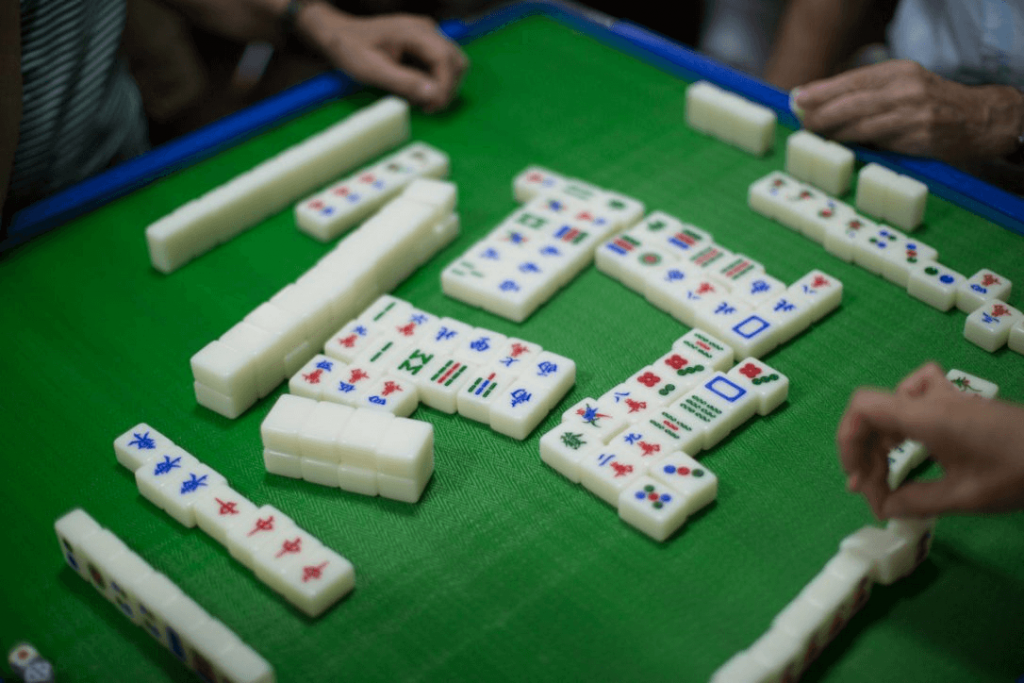
Japanese mahjong has three special rules that differentiate it from other varities: yaku, riichi, and dora. Yaku is a point multiplier for a given hand. It is basically something noteworthy about the hand, and there are a number of different yaku. Perhaps it is all one suit, perhaps there are no dragons or winds, maybe you have three of your wind or the prevailing wind. Yaku is very important because a hand must have at least one yaku in order to go out and win a round. Wikipedia has an extensive list of yaku that you may want to consult when playing for the first few times.
The second special rule is riichi. Declaring riichi is akin to saying “I only need one piece to go out and I win.” Riichi can only be called when none of a player’s tiles are revealed. However, a player may reveal their entire hand after calling riichi for bonus points. Either form of riichi is considered a yaku.
The final special rule is dora. This one is a bit more complicated, as it has to do with the scoring in mahjong, which is not the simplest thing to figure out. Remember those tiles we removed from the game during set up? Well… they do come into play, kind of. The third tile is flipped over, and the tile that comes after it in sequence (if four circle is revealed then the dora is five circle) is worth extra points in a winning hand. Dora does not count as a yaku.
A round ends when someone calls “tsumo!” or “ron!” (I love the calling in this game, it’s so fun). Tsumo means “I have drawn my final tile and I’m out!” (well, it means that for our purposes). Ron is a hand won from another’s discard. These are important when it comes to scoring. And speaking of scoring… I’ll do my best to give you the gist of it.
Each player starts with 30,000 points. After a round, the winner is “paid” his winning points by all players if he drew his final tile or the discarding player if he won by discard. Points are calculated using a method best explained by a Wikipedia article on just that subject, but it comes down to “han” and “fu.” Han are the yaku that make up a hand, as well as each dora. Each yaku and dora are worth one han, and so each hand must have at least one han. Fu are the point values of various pieces, the method of victory (ron vs tsumo), as well as a couple other special cases. The article above has a very useful table to explain all the fu points.
After adding up fu and han, they are put into a small equation to get what is the “basic point” total. The equation is: fu × 2(2+han) . It sounds a little complicated, but all the numbers round to tens, so it doesn’t end up being too bad. Most players refer to a chart that shows point values of various han and fu combinations to cut down on tedious calculations (this chart is in the article as well). Then the losers of the round pay the winner multipliers of the basic point total depending on how they went out, who went out and so forth.
Something I didn’t mention earlier is what happens if all the tiles are drawn and no one goes out. Well, anyone who was one tile away from winning is declared the winner and scores a 3,000 point pot from the remaining players, where each losing player must pay an equal share into the pot. This means there can be more than one winner, in which case both winners receive points from the pot.
Wrap up
Whew! I hope that wasn’t too much of an information overload. There is still plenty to learn about mahjong, and I could do a whole article about yaku alone! I found that the best way to learn was to play a computerized version for a while with a guide open so I could refer to it easily. This way, I didn’t have to start off remembering when I can call certain things, or figure out the scoring. My first foray into really trying to learn the game was through a silly anime parody game. In it, there is a mahjong mini-game you can play, and the creator wrote a surprisingly in-depth guide to playing the game. I still often refer to it when I play. You can find the guide here: BvS – Mahjong Rules. At the bottom of the page is a link to an excellent one player online mahjong game.
I know it may seem complicated, but I think with a little practice, anyone can learn to play mahjong. Just remember, it’s a game! Don’t get frustrated if it seems hard at first, the point is to have fun. Give yourself some time and you too can play mahjong with the greats! Maybe we can even sit down to a match some day. I’d love to take you on!
Wanna try playing the game? We suggest purchasing this Mahjong board game on Amazon.
Any idea for a game you’d like to see me take on for my next revue? Let me know in the comments below!
Big thank you to our supporters
From their continous support, we are able to pay our team for their time and hard work on the site.
We have a Thank-You page dedicated to those who help us continue the work that we’ve been doing.
See our thank you page